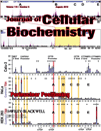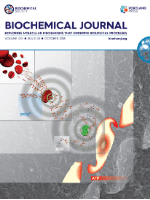
FEBS Open Bio
Scope & Guideline
Nurturing collaboration in the evolving landscape of biosciences.
Introduction
Aims and Scopes
- Biochemical and Molecular Biology:
Research focused on the biochemical processes that underlie cellular functions, including enzyme mechanisms, metabolic pathways, and molecular interactions. - Cell Biology and Physiology:
Studies examining cellular processes, signaling pathways, and physiological responses in various cell types, including investigations into cancer biology and stem cell research. - Structural Biology and Biophysics:
Research involving the structural characterization of biological macromolecules using techniques such as X-ray crystallography, NMR spectroscopy, and cryo-electron microscopy. - Genomics and Transcriptomics:
Exploration of gene expression patterns, genetic variations, and their implications for health and disease using high-throughput sequencing technologies. - Microbiology and Immunology:
Investigations into microbial biology, host-pathogen interactions, and the immune responses to infections and diseases. - Biotechnology and Bioengineering:
Research focused on the application of biological knowledge for technological advancements, including drug development, synthetic biology, and biomanufacturing. - Environmental and Ecological Studies:
Studies assessing the interactions between biological organisms and their environments, including the impact of climate change and pollution on ecosystems.
Trending and Emerging
- CRISPR and Genome Editing Technologies:
The use of CRISPR technology for genome editing is rapidly expanding, with applications ranging from gene therapy to crop improvement, reflecting its transformative potential in biology. - Microbiome Research and Its Implications:
Studies exploring the human microbiome and its role in health and disease are on the rise, highlighting the importance of microbial communities in various biological processes. - Synthetic Biology and Biomanufacturing:
Research focused on engineering biological systems for the production of biofuels, pharmaceuticals, and other valuable compounds is gaining momentum as sustainability becomes a priority. - Personalized Medicine and Biomarkers:
The identification of biomarkers for personalized treatment strategies in various diseases, especially cancer, is a growing area of interest, driven by advances in genomics and biochemistry. - Cellular Mechanotransduction:
Investigations into how cells sense and respond to mechanical stimuli are emerging as significant, particularly in the context of tissue engineering and regenerative medicine. - Immunotherapy and Cancer Treatment Innovations:
Research into novel immunotherapeutic approaches, including CAR-T cell therapy and immune checkpoint inhibitors, is rapidly advancing, reflecting a shift towards targeted cancer therapies.
Declining or Waning
- Classical Biochemistry Techniques:
Research utilizing traditional biochemical methods may be declining as newer, more advanced techniques such as CRISPR and high-throughput sequencing gain popularity. - Single-Cell Analysis in Non-Cancer Contexts:
While single-cell analysis remains a hot topic in cancer research, its application in other biological contexts may be waning as focus shifts towards more integrated approaches. - Basic Microbiology Studies:
Research that does not translate into applied microbiology or clinical relevance may be declining, as journals increasingly favor studies with direct implications for health or industry. - In Vivo Models of Disease:
The reliance on in vivo models may be decreasing as alternative methods, such as organ-on-a-chip technologies and computational models, become more prominent. - Studies with Limited Interdisciplinary Approach:
Papers that do not incorporate interdisciplinary methods or collaborations may be less favored, reflecting a trend towards integrative research.
Similar Journals

JOURNAL OF CELLULAR BIOCHEMISTRY
Transforming Knowledge into Breakthroughs in Cellular BiochemistryJournal of Cellular Biochemistry is a premier academic journal dedicated to advancing the field of biochemistry and cellular biology. Published by Wiley, this influential journal has a significant impact factor that underscores its relevance and authority within the scientific community. With its ISSN 0730-2312 and E-ISSN 1097-4644, the journal has been on the frontier of research since its inception in 1982, and is expected to continue publishing cutting-edge studies through 2024. As evidenced by its ranking in the 2023 Scopus Quartiles, it holds a rank of Q2 in Biochemistry and Q3 in both Cell and Molecular Biology, placing it among the top tiers of scientific journals in these disciplines. The Journal of Cellular Biochemistry serves as a vital resource for researchers, professionals, and students alike, providing a platform for the dissemination of innovative ideas and findings that shape our understanding of cellular processes and biochemical pathways. Though it does not currently offer Open Access options, its robust peer-review process ensures that each publication meets the highest academic standards, thus solidifying its esteemed position in the landscape of biochemical research.

INSECT MOLECULAR BIOLOGY
Decoding Insect Biology Through Molecular InsightsInsect Molecular Biology, published by Wiley, is a leading journal dedicated to advancing the field of insect biology through molecular perspectives. With a prominent ISSN of 0962-1075 and an E-ISSN of 1365-2583, this journal has gained a significant reputation since its inception in 1992, showcasing a diverse array of research that spans across genetics, molecular biology, and specific aspects of insect science. As of 2023, it has achieved a remarkable categorization, recognized as Q1 in Insect Science and Q3 in Genetics and Molecular Biology, underscoring its pivotal role in fostering academic discourse at the intersection of biology and technology. The journal is indexed in esteemed databases with strong rankings, sitting at the 82nd percentile in Insect Science, which highlights the impactful research it publishes. While it currently does not offer open access, Insect Molecular Biology remains an essential resource for researchers, students, and professionals eager to explore the complexities of insect life at the molecular level. By disseminating innovative findings and methodologies, the journal significantly contributes to both theoretical and applied entomological research, making it a cornerstone for anyone passionate about the intricate world of insects.

Genes & Diseases
Unlocking the secrets of genes to combat diseases.Genes & Diseases, published by KEAI PUBLISHING LTD, is a premier open-access journal dedicated to advancing the fields of genetics, biochemistry, and molecular biology. Established in 2014 and headquartered in Beijing, China, this journal has quickly risen to prominence, securing a place in the prestigious Q1 quartile in Biochemistry and Genetics (clinical), as well as Q2 in Cell Biology and Q1 in Molecular Biology as of 2023. With a commitment to disseminating cutting-edge research, Genes & Diseases serves as a critical platform for researchers, professionals, and students alike, ensuring that high-quality scientific work is openly accessible to the global community. The journal's exceptional impact is underscored by its selective Scopus rankings, which reflect its influence and relevance in key scientific domains, making it an essential resource for those exploring the intersections of genetics and disease pathology.

Biochemistry and Cell Biology
Illuminating pathways in biochemistry and cell biology research.Biochemistry and Cell Biology, published by Canadian Science Publishing, is a prestigious journal that has been instrumental in advancing the fields of biochemistry, molecular biology, and cell biology since its inception in 1986. With an impressive scope spanning innovative research findings to comprehensive reviews, this journal serves as a vital resource for researchers, professionals, and students alike. Currently positioned in the Q2 quartile in Biochemistry and Q3 quartiles in both Cell Biology and Molecular Biology, it reflects a robust contribution to scientific discourse, placing it among reputable publications in its field. The journal boasts notable rankings within the Scopus database, highlighting its impact and relevance, and continues to be a valuable platform for disseminating pivotal research. By providing access to a wide array of articles, the journal remains committed to fostering knowledge and collaboration in the scientific community.

Open Biology
Unlocking the mysteries of biology, one study at a time.Open Biology is a prestigious, interdisciplinary journal published by the Royal Society that has been paving the way in the fields of Biochemistry, Genetics and Molecular Biology, Immunology, and Neuroscience since its inception in 2011. Catering to a global audience of researchers, professionals, and students, Open Biology operates under an open access model, facilitating the unrestricted dissemination of high-quality research findings. With a current impact factor that positions its categories in the top quartile (Q1) and impressive Scopus rankings—evidencing its influence and reach—this journal serves as a vital platform for innovators and scientific inquiries aimed at advancing our understanding of life sciences. The journal's commitment to publishing cutting-edge research makes it an essential resource for those at the forefront of scientific exploration.

BIOCHEMICAL JOURNAL
Empowering Researchers with Cutting-Edge InsightsBIOCHEMICAL JOURNAL, published by Portland Press Ltd, stands as a leading publication in the fields of Biochemistry, Cell Biology, and Molecular Biology, reflecting a commitment to advancing scientific knowledge since its inception in 1945. With a distinguished Q1 ranking across these categories and impressive Scopus rankings, the journal serves as an invaluable resource for researchers, professionals, and students alike, facilitating critical discoveries and innovative research practices. Although not currently offering open access, the journal provides a platform for high-quality peer-reviewed articles, ensuring rigorous standards in the dissemination of biochemical research. Spanning over seven decades and continuing through to 2024, the BIOCHEMICAL JOURNAL fosters an environment where cutting-edge biochemical research thrives, supporting the global scientific community's efforts to address complex biological questions and enhance our understanding of fundamental cellular processes.

JOURNAL OF BIOLOGICAL CHEMISTRY
Unveiling Molecular Mysteries, One Study at a TimeJOURNAL OF BIOLOGICAL CHEMISTRY, published by Elsevier, is a premier interdisciplinary journal dedicated to advancing our understanding of biochemistry, cell biology, and molecular biology. With a prestigious history dating back to 1945 and an impressive convergence of research expected to continue through 2024, this journal holds a Q1 ranking in all three of its core categories, signaling its critical influence in the respective fields, supported by a robust Scopus ranking that places it among the top echelons of internationally recognized research. Although currently not available as Open Access, the journal is essential for researchers and professionals looking to stay abreast of the latest breakthroughs and innovations in biochemical research. With a deep commitment to scientific rigor and a focus on diverse topics ranging from cellular processes to molecular mechanisms, the Journal of Biological Chemistry serves as a vital resource for the academic community, shaping the future of biological sciences.

Communications Biology
Pioneering Research for a Sustainable FutureCommunications Biology, published by NATURE PORTFOLIO, is a premier open-access journal that has been at the forefront of biological sciences since its inception in 2018. With a remarkable impact factor and a strong reputation in the field, it has achieved prestigious Q1 rankings in Agricultural and Biological Sciences, Biochemistry, Genetics and Molecular Biology, and Medicine, highlighting its significance in disseminating cutting-edge research. The journal is renowned for its focus on innovative, interdisciplinary biological studies, making it an essential platform for researchers, professionals, and students alike, eager to contribute to and engage with the latest discoveries. With its commitment to accessibility, all articles published are openly available to the global research community, furthering the collaboration and advancement of knowledge in the biological sciences. For more information, access options, and submission guidelines, please visit the journal's website.

JOURNAL OF BIOSCIENCES
Advancing the Frontiers of Biosciences ResearchJOURNAL OF BIOSCIENCES, published by the Indian Academy of Sciences, has established itself as a pioneering platform in the fields of biosciences, encompassing diverse research areas such as agricultural and biological sciences, biochemistry, genetics, molecular biology, and medicine. With an impressive trajectory since its inception in 1979, the journal has achieved notable recognition, securing a Q1 ranking in Agricultural and Biological Sciences and maintaining its place in the top quartiles for Biochemistry and Medicine as of 2023. With Scopus rankings placing it at #32 in General Agricultural and Biological Sciences and #65 in General Biochemistry, Genetics, and Molecular Biology, the journal reaches the 85th and 70th percentiles respectively, reflecting its impact and relevance in current scientific discourse. Although it does not offer open access, the JOURNAL OF BIOSCIENCES remains crucial for researchers, professionals, and students dedicated to advancing knowledge and innovation within the biosciences, providing a vibrant forum for high-quality research and comprehensive reviews.

FOLIA BIOLOGICA
Elevating Biological Research Through Peer ReviewFOLIA BIOLOGICA, published by Charles University Prague, First Faculty of Medicine, is an esteemed academic journal that has been contributing to the fields of Biochemistry, Cell Biology, Developmental Biology, Genetics, Immunology, and Molecular Biology since its inception in 1961. With an ISSN of 0015-5500, this journal serves as a vital platform for researchers and professionals to disseminate their findings and advance knowledge within these disciplines. Despite its current Category Quartiles ranking in the lower tiers (Q3 and Q4), FOLIA BIOLOGICA continues to provide valued insights and foster scholarly dialogue, particularly in its paralleled fields. The journal is headquartered in Prague, Czech Republic, and operates without Open Access options, which emphasizes its focus on curated, peer-reviewed content essential for academicians and students. By bridging theoretical and practical knowledge, FOLIA BIOLOGICA remains committed to enriching the scientific community and serving as a cornerstone for future research innovations.